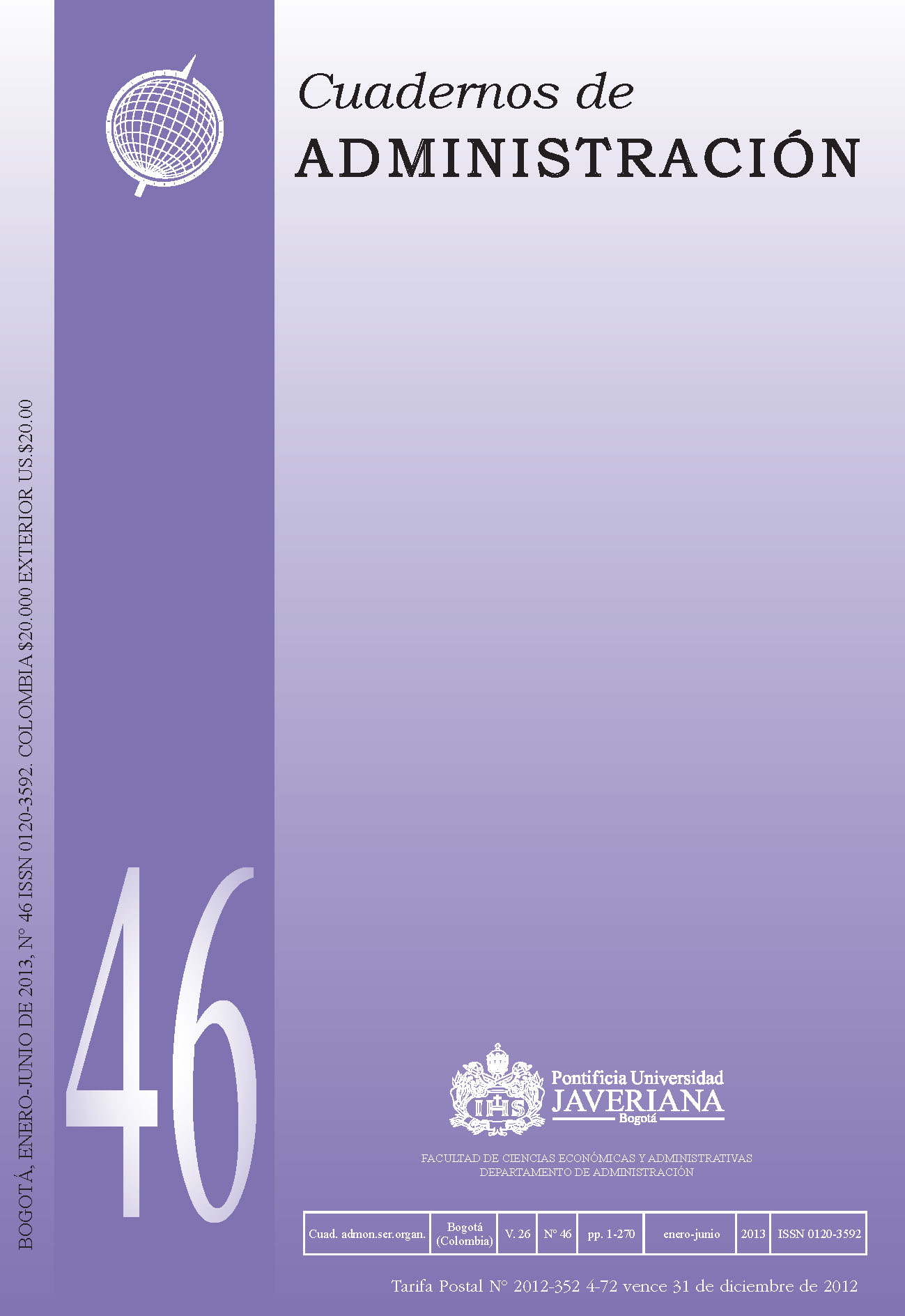Resumo
Este artigo explora as oportunidades de crescimento, diversificação e competência do comércio entre a Colômbia e a Turquia, e aquelas que se derivariam com a subscrição de um tratado de livre comércio (TLC). Calculam-se cinco indicadores de comércio e política comercial e utiliza-se informação desvinculada do ano 2010 para fazer simulações de equilíbrio parcial e estimar os efeitos de comércio, bem-estar e ingresso que teria o eventual acordo. Os resultados mostram que uma redução tarifária produziria um aumento do comércio de 3,7% no primeiro ano, refletido em importações colombianas do setor têxtil e em exportações de banana para a Turquia; se criaria comércio em termos líquidos e o desvio de comércio afetaria a União Europeia, os Estados Unidos e o Equador; os consumidores colombianos e turcos ganhariam em termos de bem-estar e se reduziria mais a arrecadação tributária da Turquia do que a da Colômbia.
Armington, P. (1969). A theory of demand for products distinguished by place of production. International Monetary Found Staff Papers, 16, (1), 159-176.
Baier, S. and Bergstrand, J. (2004). Trade agreements and trade flows: Estimating the effect of free trade agreements on trade flows with an application to the European Union. European Economy - Economic Papers 214, Directorate General Economic and Monetary Affairs, European Commission.
Bhagwati, J. and Panagariya, A. (1996). Preferential trading areas and multilateralism: Strangers, friends or foes? The Economics of Preferential Trade Agreements, J. Bhagwati y A. Panagariya (Eds.) Washington, D.C: AEI Press (pp. 1-78).
Bhagwati, J. (1996). Dissent at APEC meeting cannot be ignored. Letters to the Editor, Financial Times, 6.
Clausing K. A. (2001). Trade creation and trade diversion in the Canada-United States Free Trade Agreement. The Canadian Journal of Economics, 34 (3), 677-696.
Falvey, R. and Reed, G. (1997). Rules of origin as commercial policy instruments, mimeo, University of Nottingham.
Frankel, J., Stein E. and Wei, S. (1995). Trading blocs and the Americas: The natural, the unnatural, and the super-natural. Journal of Development Economics, 47, pp. 61-95.
Fugazza, M. and Nicita, A. (2013). The direct and relative effects of preferential market access. Journal of International Economic, 89, (2), 357-368.
Jammes, O. and Olarreaga, M. (2005). Explaining SMART and GSIM. Mimeo. Washington D.C.: The World Bank.
Krishna, K. and Krueger, A. (1995). Implementing free trade areas: Rules of origin and hidden protection. NBER Working Paper n°. 4983. NBER. Cambridge, Massachusetts.
Krishna, P. (1998). Regionalism and multilateralism: A political economy approach. Quarterly Journal of Economics, 113 (1), 227-251.
Krueger, A. (1997). Free trade agreements versus customs unions, Journal of Development Economics, 54 (1), 169-187.
Krugman, P. (1991). The move toward free trade zones. En Policy implications of trade and currency zones: A symposium sponsored by the Federal Reserve Bank of Kansas City. Kansas City: Federal Reserve Bank of Kansas City.
Laird, S. and Yeats, A. (1986). The UNCTAD trade policy simulation model. United Nations Conference on Trade and Development.
Levy, P. (1997), A political-economic analysis of free-trade agreements. American Economic Review 87 (4).
Magee, C. (2008). New measures of trade creation and trade diversion. Journal of International Economics, 75 (2), 340-62.
Panagariya, A. (1996). The free trade area of the Americas: Good for Latin America? World Economy, 19 (5), 485-515.
Panagariya, A. (1998). Rethinking the new regionalism. En Nash J. and Takacs W. (Eds.), Trade policy reform.
lessons and implications, Washington, D.C.: World Bank, (pp. 87-145).
Summers, L. (1991). Regionalism and the World Trading System. In Policy implications of trade and currency zones. Symposium sponsored by the Federal Reserve Bank of Kansas City (pp. 295-301).
Viner, J. (1950). The customs union issue. New York: Carnegie endowment for international peace. United Nations. Economic and social affairs (2004) International merchandise trade statistics: Compilers manual. (New York).
Wonnacott, P. and Lutz, M. (1989). Is there a case for free trade areas? In J. Jeffrey and Schott, (Eds.), Free trade areas and U.S. trade policy (pp. 59- 95). Washington, D.C.: Institute for International Economics.
Cuadernos de Administración se encuentra registrada bajo la licencia Creative Commons Reconocimiento 4.0 Internacional. Por lo tanto, esta obra se puede reproducir, distribuir y comunicar públicamente en formato digital, siempre que se reconozca el nombre de los autores y a la Pontificia Universidad Javeriana. Se permite citar, adaptar, transformar, autoarchivar, republicar y crear a partir del material, para cualquier finalidad (incluso comercial), siempre que se reconozca adecuadamente la autoría, se proporcione un enlace a la obra original y se indique si se han realizado cambios. La Pontificia Universidad Javeriana no retiene los derechos sobre las obras publicadas y los contenidos son responsabilidad exclusiva de los autores, quienes conservan sus derechos morales, intelectuales, de privacidad y publicidad.
El aval sobre la intervención de la obra (revisión, corrección de estilo, traducción, diagramación) y su posterior divulgación se otorga mediante una licencia de uso y no a través de una cesión de derechos, lo que representa que la revista y la Pontificia Universidad Javeriana se eximen de cualquier responsabilidad que se pueda derivar de una mala práctica ética por parte de los autores. En consecuencia de la protección brindada por la licencia de uso, la revista no se encuentra en la obligación de publicar retractaciones o modificar la información ya publicada, a no ser que la errata surja del proceso de gestión editorial. La publicación de contenidos en esta revista no representa regalías para los contribuyentes.


